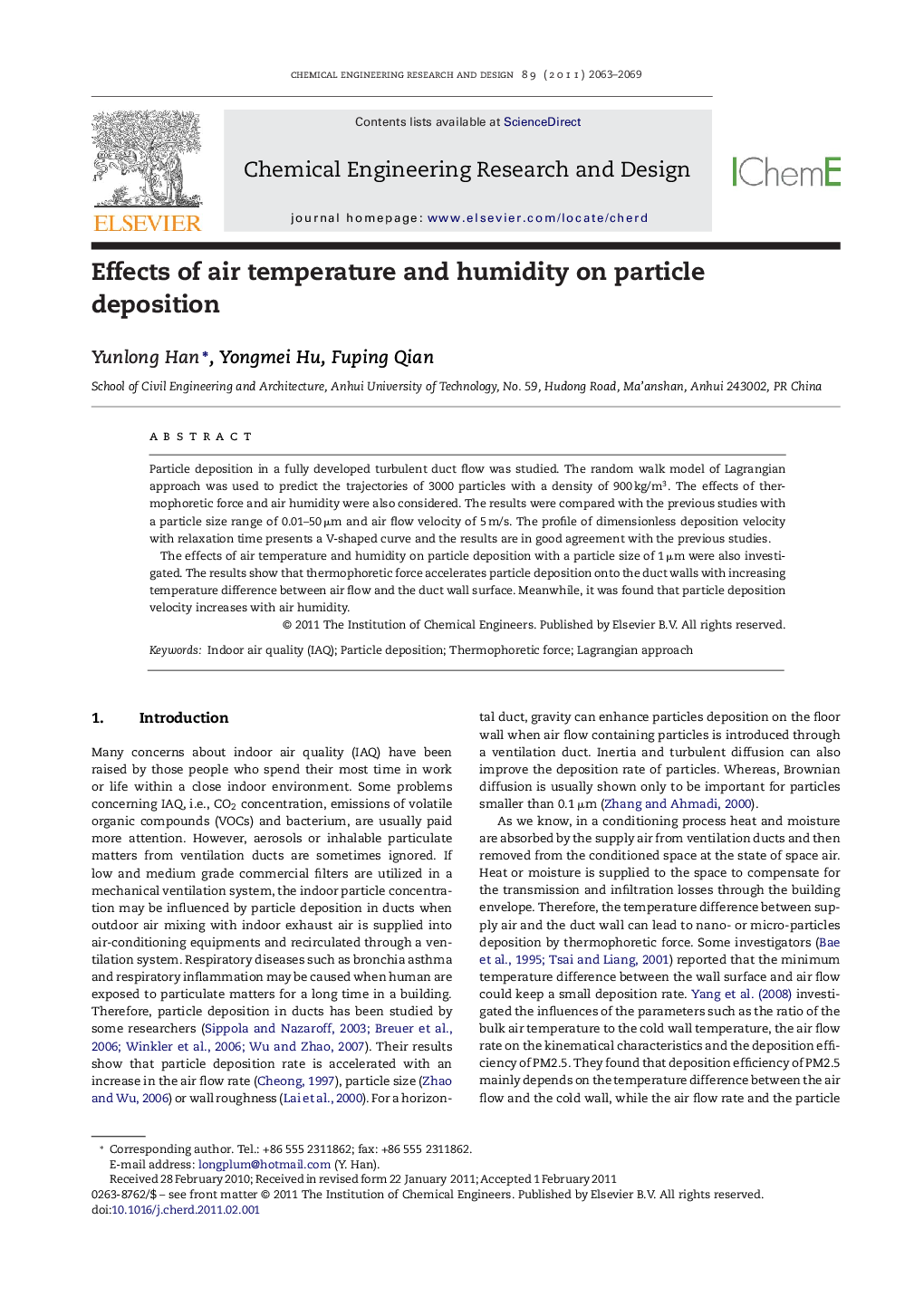| Article ID | Journal | Published Year | Pages | File Type |
|---|---|---|---|---|
| 620824 | Chemical Engineering Research and Design | 2011 | 7 Pages |
Particle deposition in a fully developed turbulent duct flow was studied. The random walk model of Lagrangian approach was used to predict the trajectories of 3000 particles with a density of 900 kg/m3. The effects of thermophoretic force and air humidity were also considered. The results were compared with the previous studies with a particle size range of 0.01–50 μm and air flow velocity of 5 m/s. The profile of dimensionless deposition velocity with relaxation time presents a V-shaped curve and the results are in good agreement with the previous studies.The effects of air temperature and humidity on particle deposition with a particle size of 1 μm were also investigated. The results show that thermophoretic force accelerates particle deposition onto the duct walls with increasing temperature difference between air flow and the duct wall surface. Meanwhile, it was found that particle deposition velocity increases with air humidity.
Research highlights► Different duct cross-section sizes lead to discrepancies of flow fields. ► Reynolds number by the cross-section size does not affect on particles deposition. ► Thermophoretic force can enhance particle deposition for small particles. ► Particle deposition velocity increases with air relative humidity of duct.
